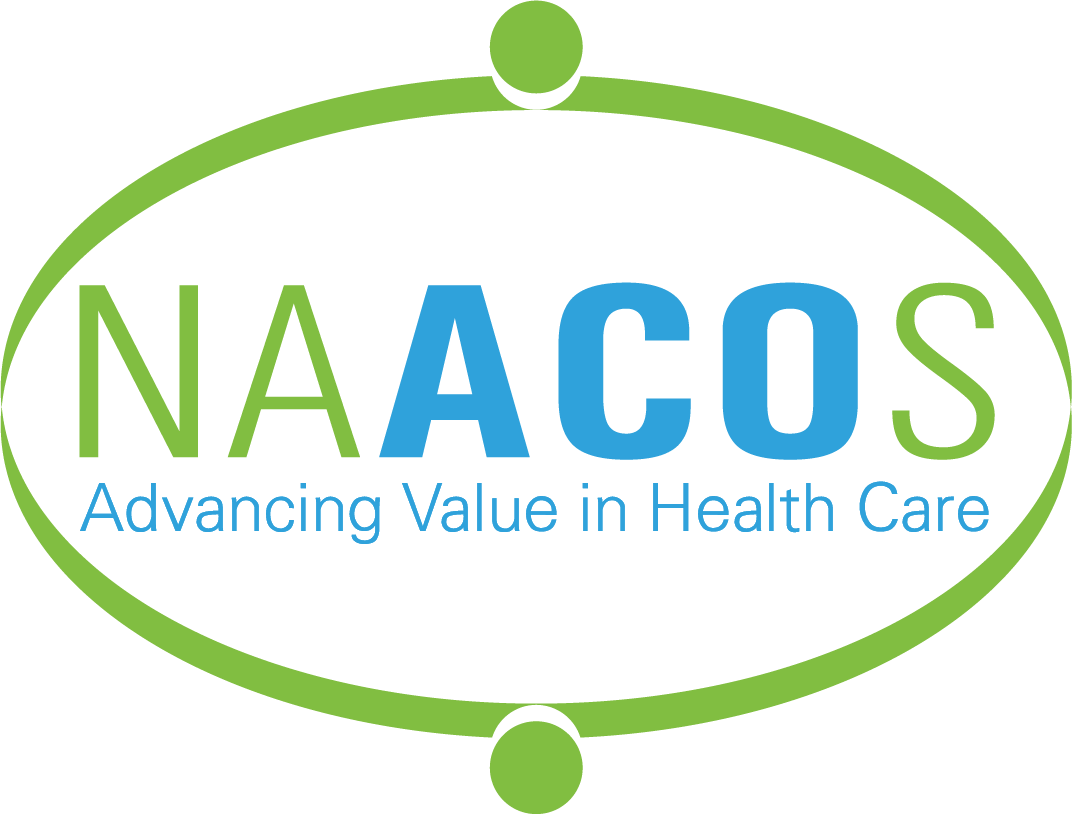MSSP Track 1 ACOs and MIPS in 2018 Frequently Asked Questions
The Medicare Access and CHIP Reauthorization Act (MACRA) of 2015 established a new Medicare clinician reimbursement mechanism with two payment tracks: the Merit-based Incentive Payment System (MIPS) track and the Advanced Alternative Payment Model (APM) track. Collectively, these payment pathways are referred to as the Quality Payment Program (QPP). These FAQs are intended for medical group practices and eligible clinicians (ECs) participating in an Accountable Care Organizations (ACO) in Track 1 of the MedicareShared Savings Program (MSSP). Track 1 ACOs are not considered Advanced APMs and are therefore subject to MIPS. MGMA and NAACOs have partnered to address common areas of confusion for Track 1 ACO participants about the intersection between MSSP ACOparticipation and MIPS reporting obligations. For purposes of MSSP, an “ACO Participant” is a Medicare-enrolled healthcare provider identified by its tax identification number (TIN) that has signed a Participant Agreement with an MSSP ACO.
| Q1 | How are MSSP ACO participants scored in MIPS? |
MSSP Track 1 ACOs are considered MIPS APMs and accordingly will be scored under the MIPS “APM scoring standard,” which has a few notable differences from standard MIPS scoring, as described throughout this guide. CMS calculates one final score for the APMentity (i.e., the ACO) and applies it to all ECs within the ACO. Consequently, all MIPS ECs in an ACO Participant group practice receive the same payment adjustment.The following graph displays high-level MIPS reporting and scoring information for MSSP Track 1 ACOs:
| MIPS Category | Weight | Track 1 ACO Requirements |
| Quality | 50% | ACO reports quality measure data on behalf of participants |
| Cost | 0% | Waived |
| Improvement Activities | 20% | Automatically receive highest possible score; no attestation necessary |
| Promoting Interoperability | 30% | All practices in the ACO must report data for this category, separately from the ACO. Practice scores will be aggregated and averaged using a weighted average to determine one PI category score for the ACO. |
| Q2 | What happens if our group practice participates in a Track 1 ACO and hires a new clinician midway through the year? How will the Centers for Medicare & Medicaid Services (CMS) know s/he is participating in the ACO? |
In order to be associated with the MSSP Track 1 ACO and receive the MIPS APM scoring standard, an EC must appear on the ACO’s official Participant List on at least one of the following “snapshot” dates: Mar. 31, June 30, Aug. 31, or Dec. 31*. ECs only need to appear on the list at one point during the year. ECs who assign their billing rights to an ACO mid- year can still be associated with the ACO and considered under the MIPS APM scoring standard. Group practice leaders and clinicians should ensure their reassignment information is current in PECOS, as CMS uses this data for the ACO Participant List.
*Note that the fourth participation snapshot date, Dec. 31, was added beginning in performance year 2018. For purposes of the 2017 performance period (2019 payment year), ACO participants would need to appear on an ACO’s Participant List prior to Aug. 31 to be included with the ACO for 2017 MIPS performance.
| Q3 | What if an ACO drops out of the ACO program during the performance year? |
If an ACO drops out of the MSSP during the performance year prior to March 31 (the first snapshot date), the MIPS ECs that are part of the ACO would not be scored collectively as a Track 1 ACO under the MIPS APM scoring standard. Instead, these clinicians would have to report individually or as a group practice. If an ACO’s participation in the MSSP is terminated on or after March 31 of a performance period, the MIPS ECs in the ACO would still be scored under MIPS APM scoring standard for the year, including being awarded full credit for Improvement Activities.
| Q4 | Is it true that the ACO will report quality performance data on behalf of ECs and group practices who participate in the ACO? |
Yes. The ACO will submit quality measures through the CMS Web Interface on behalf of participating MIPS ECs and group practices. Under the MSSP, ACOs are held accountable for quality performance on certain measures, including CMS Web Interface measures, CAHPS for ACOs patient satisfaction survey measures, and other measures. Under the QPP, CMS will use the data submitted by ACOs through the CMS Web Interface to calculate a MIPS quality score for all ACO participants. Although the same data will be used by both QPP and the MSSP, the scoring methodologies CMS applies in these two programs are different. For instance, the MIPS quality performance category requirements and benchmarks are used to determine a MIPS quality performance category score at the ACO level.
| Q5 | What happens if an ACO is unsuccessful with quality reporting? |
Should an ACO fail to report quality data, its ECs would receive a MIPS quality performance score of zero unless the ACO participant TIN reports separately from the ACO, either at the group or individual EC level. In these instances, CMS would still score the individual or group using the APM scoring standard; therefore, the individual or group would receive full credit for Improvement Activities, would not be scored on cost and would have the MIPS APM performance category weights apply. This policy applies for purposes of MIPS scoring, and does not cancel or mitigate any of the negative consequences associated with non- reporting of quality as required under the MSSP, including ineligibility for shared savings payments and/or potential termination of the ACO from the program.
| Q6 | If the ACO submits quality measure data under the ACO’s TIN, will the ACO also submit promoting interoperability (PI) (formerly advancing care information) data? |
No. Each practice (participant billing TIN) within the ACO will need to submit data for the PI performance category at the group practice level according to the MIPS PI group reporting requirements. In other words, groups in Track 1 ACOs must aggregate and report all PI measure numerator/denominator data for all MIPS ECs within the group. CMS has indicated the group should include PI data for MIPS ECs who may otherwise be exempted from PI due to a significant hardship or other type of exception, such as being hospital-based or non- patient-facing, if there is data in the EHR for that EC. Therefore, MIPS ECs who are part of the group and have data in CEHRT will be scored on the PI category like all other MIPS ECs.
To calculate an ACO’s overall average PI score, all ACO participant TIN scores are weighted according to the number of MIPS ECs in each TIN as a proportion of the total number of MIPS ECs in the ACO and then aggregated to determine one category score for all participants in the ACO.
| Q7 | Does each practice in the ACO need to report for the same 90-day period under PI requirements? |
No. Each practice may select its own 90-day period to report PI data to CMS.
| Q8 | How does MIPS affect the ACO quality measure #11, Use of CEHRT? |
CMS made changes to the ACO quality measure #11, Use of CEHRT, when the MIPS program was established to harmonize program criteria in the MSSP and MIPS. Therefore, CMS made the ACO quality measure #11 a pay-for-reporting measure in 2017 and 2018. ACOs must meet the “complete and accurate” reporting standard in order to receive full credit for this quality measure. The “complete and accurate” reporting standard for 2017 and 2018 requires at least one EC in the ACO entity to meet the Base Score PI criteria at a minimum.
| About MGMA | About NAACOS |
| With a membership of more than 40,000 medical practice administrators, executives, and leaders,the Medical Group Management Association (MGMA) represents more than 12,500 organiza- tions of all sizes, types, structures, and special-ties that deliver almost half of the healthcare in the United States. MGMA members can find more resources and information about MIPS at www.mgma.com/MACRA. | Determined to create an environment for advoca- cy and shared learning, more than 300 ACOs with more than 5 million lives from all 50 states and the District of Columbia formed the National Association of ACOs (NAACOS). NAACOSmembers can find more detailed information on how ACOs are scored in MIPS by accessing The ACO Guide to MACRA, available free to members on the NAACOS website. |
 |
